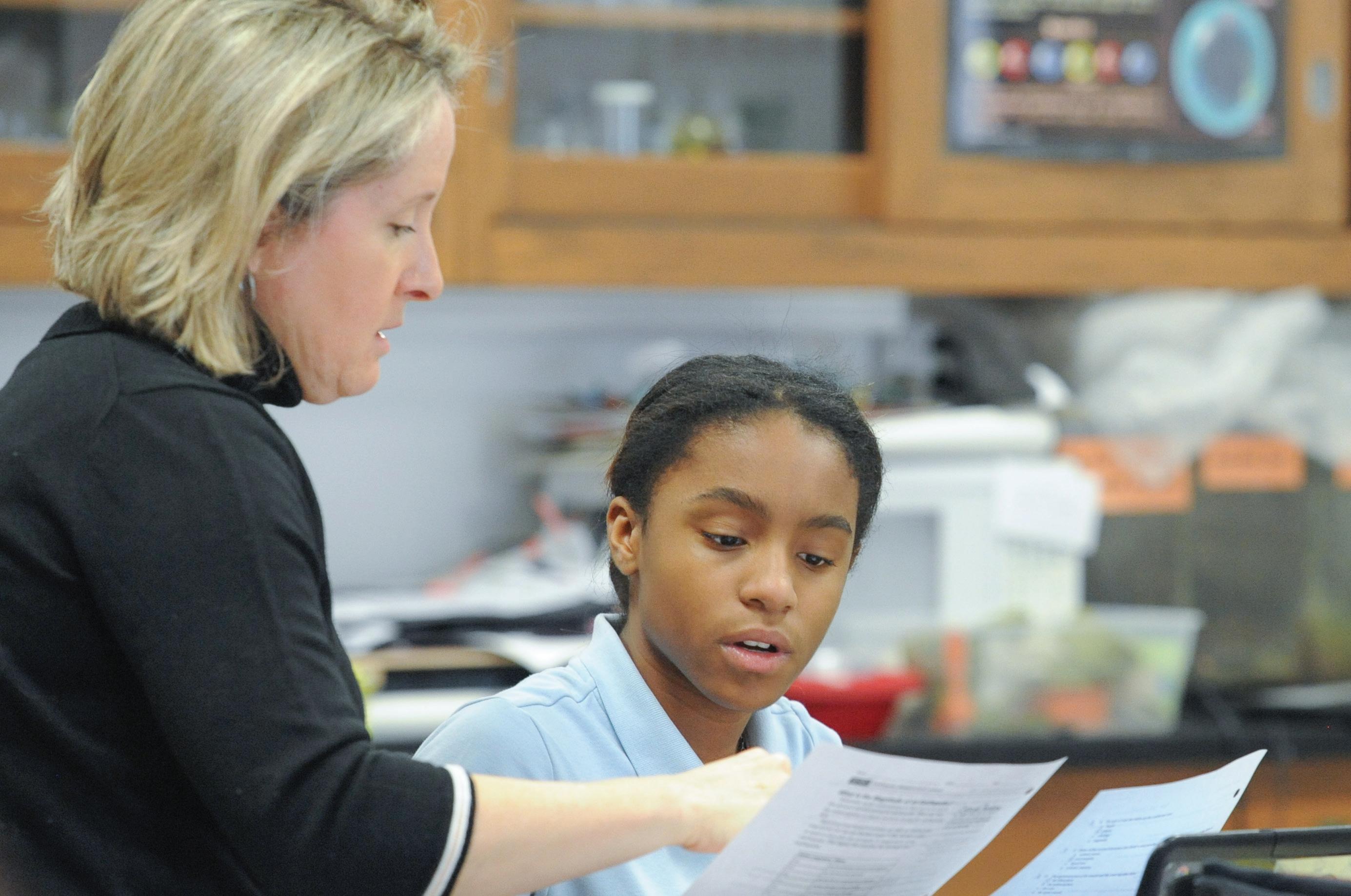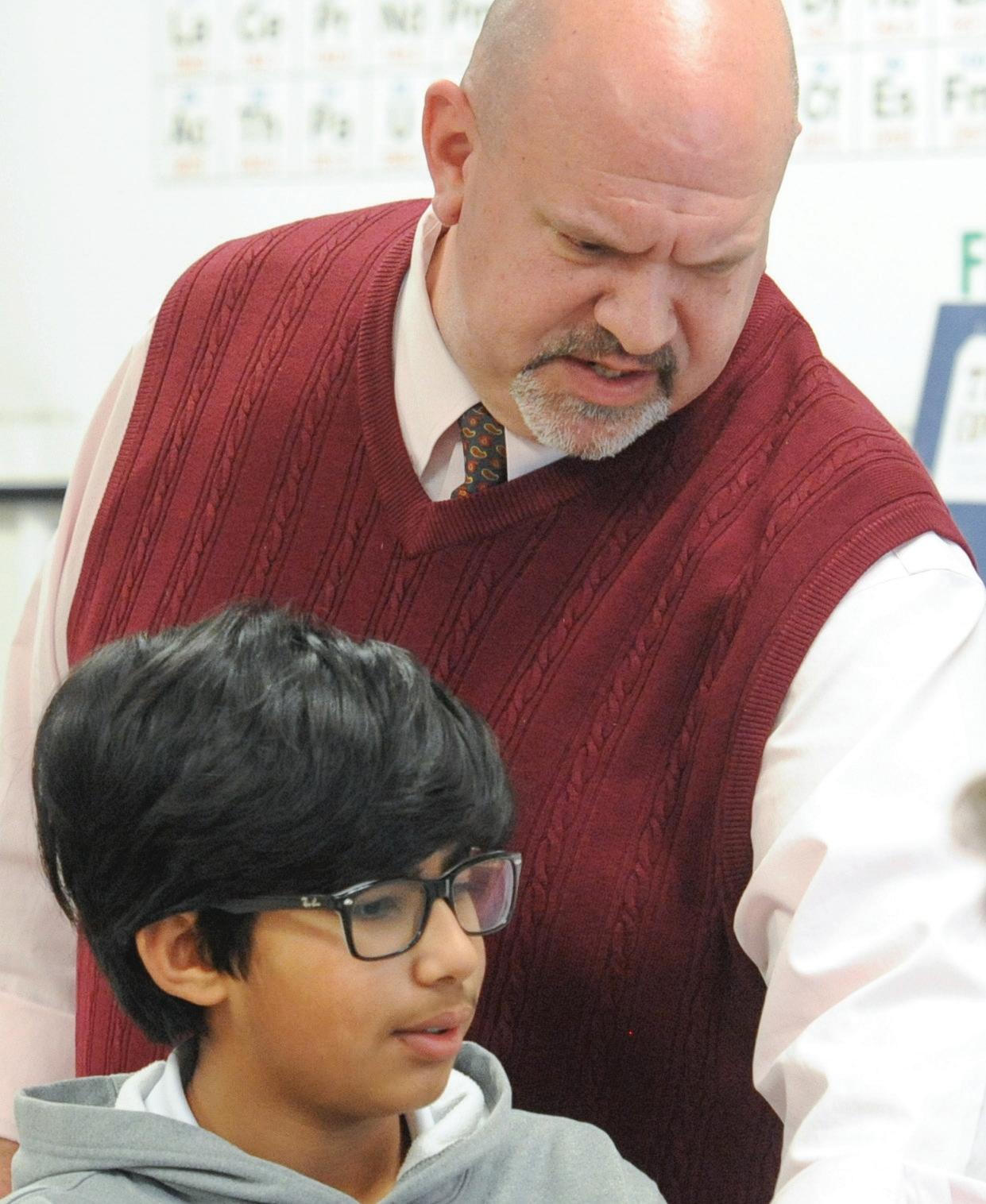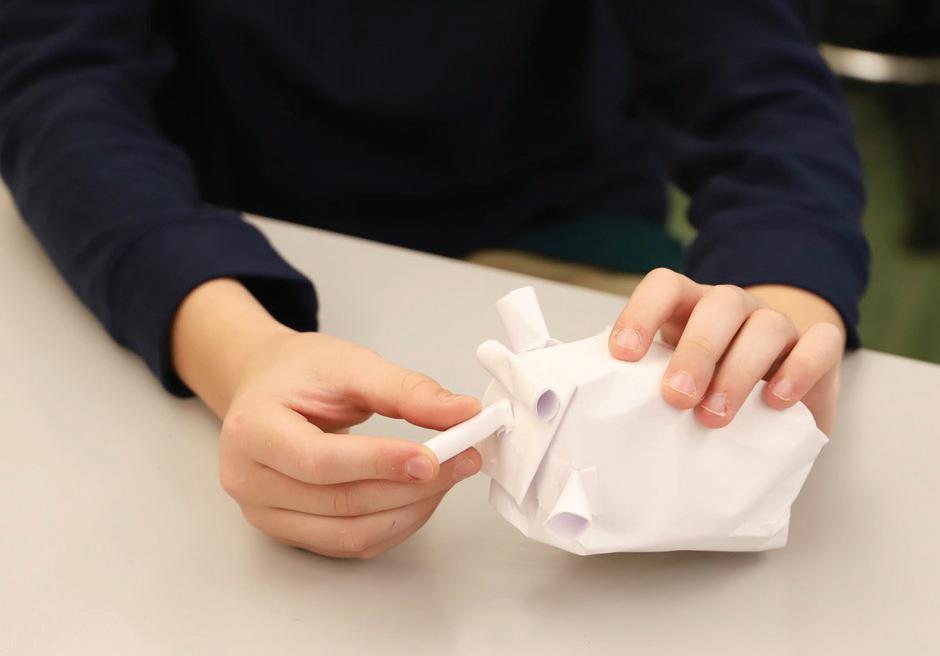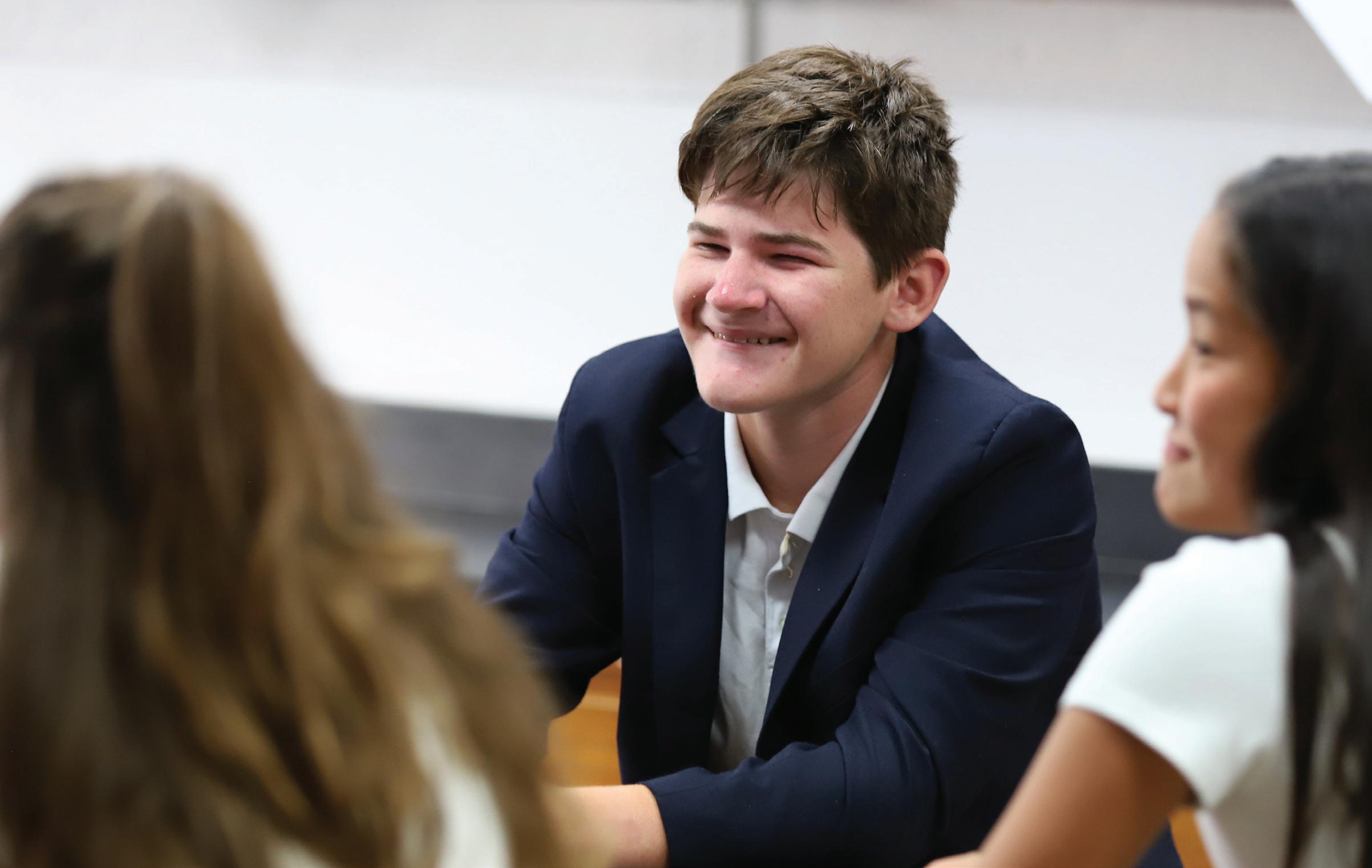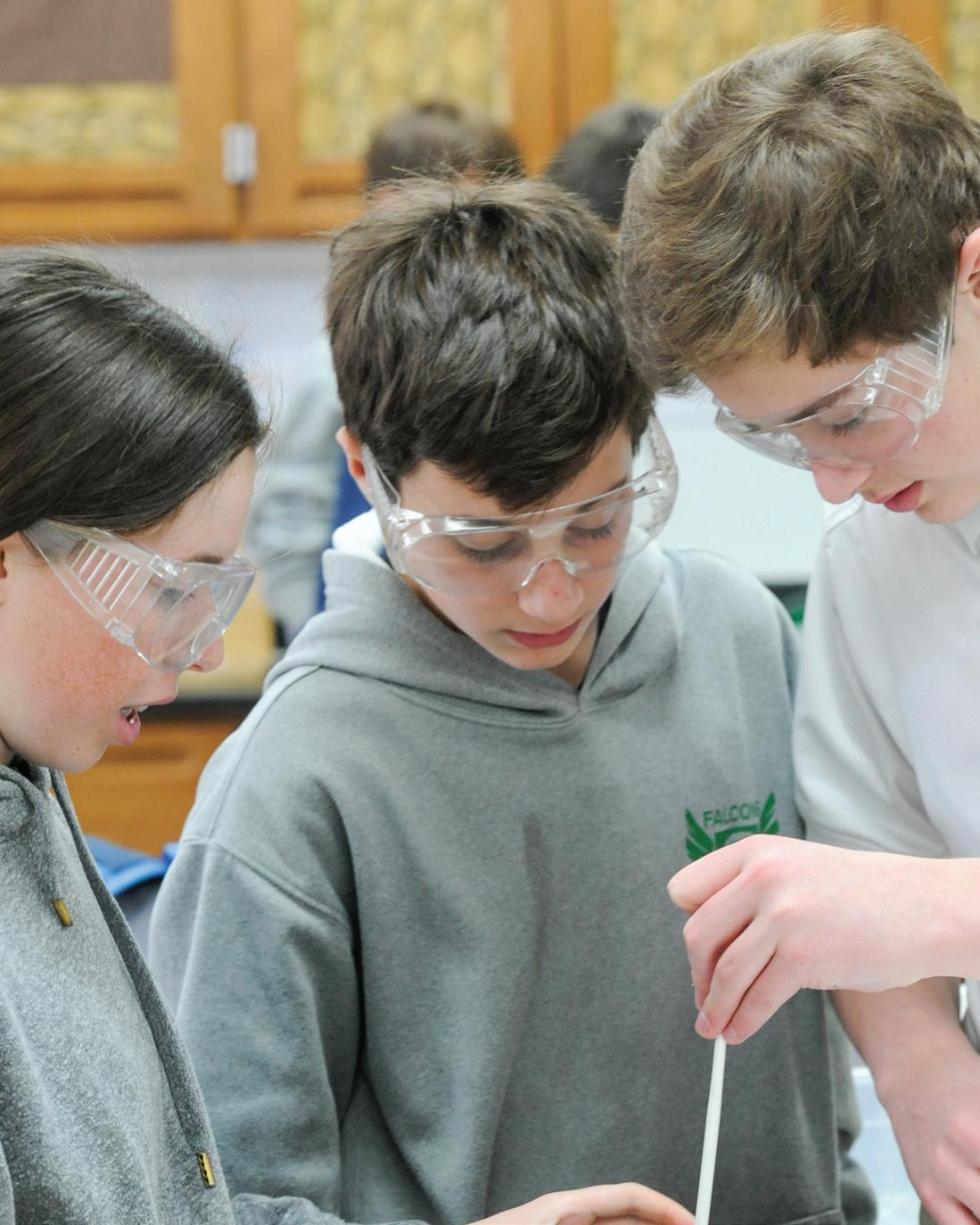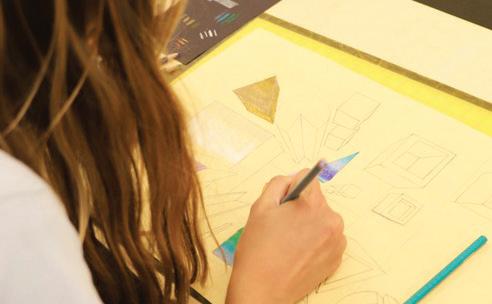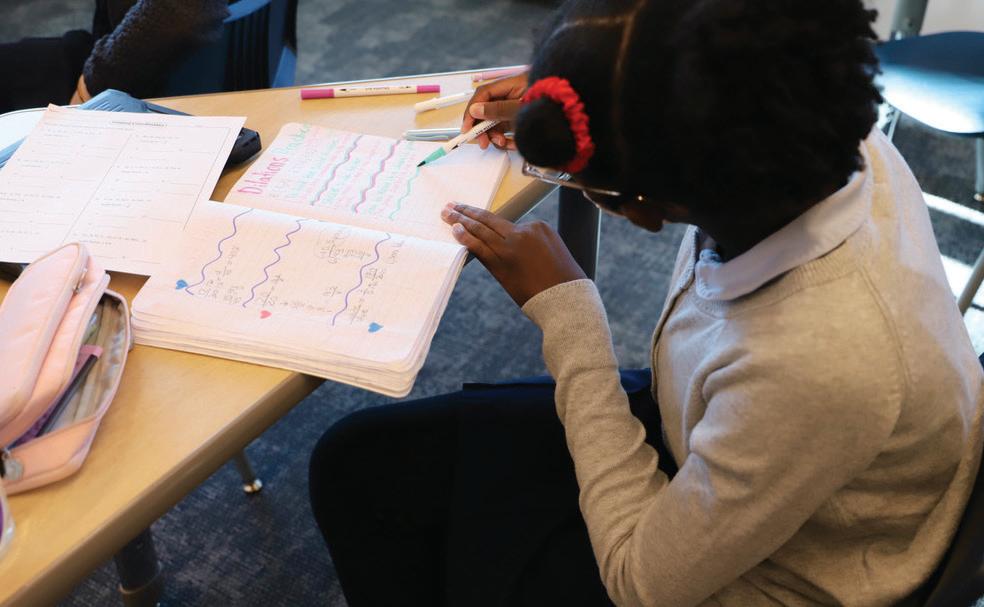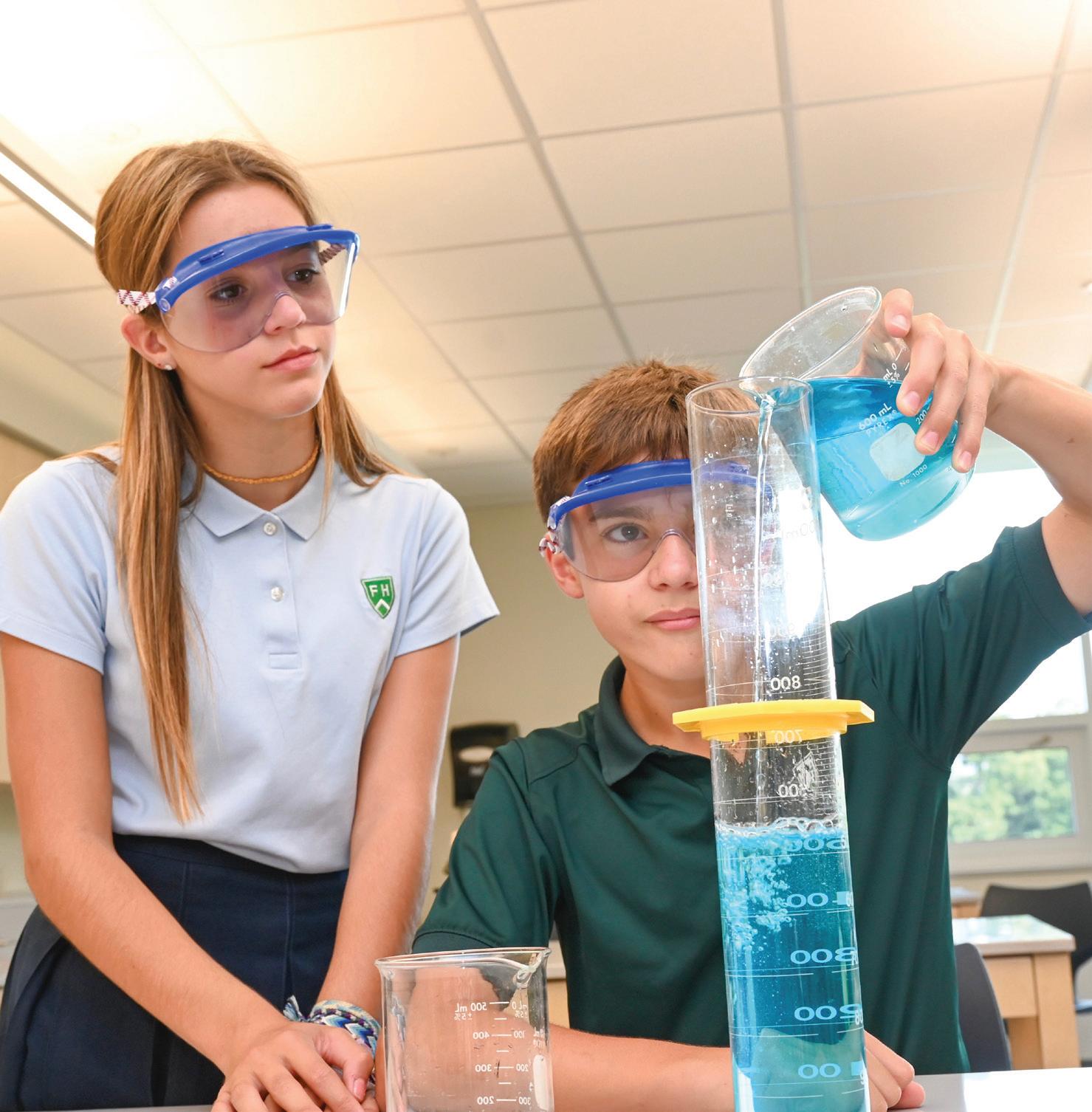
7 minute read
Grade 7
Grade 7 at Far Hills
English
Grade 7 English class introduces students to a wide range of fiction and non-fiction texts. The year begins with an intense study of classic short stories such as The Tell Tale Heart by Edgar Allan Poe and ends with a unit study on historical fiction. Students read Laurence Yep’s Dragonwings about the Chinese Immigration experience at the turn of the 20th century. In connection with their investigation of World War II, students read The Diary of a Young Girl by Anne Frank. These anchor texts launch writing projects, both analytical and creative. Students take ownership of the writing process at this level, engaging in peer editing and revising with each draft. Students study vocabulary from Greek and Latin roots. Building on the five-paragraph essay work done in Grade 6, Grade 7 students write more extended essays with a thesis statement supported by evidence from the text. Daily homework and independent classwork reinforce critical skills taught in whole group instruction and small group work.
History
Grade 7 History focuses on select themes and time periods in American History post-Civil War. By studying periods such as Reconstruction, Westward Expansion, the Gilded Age, World War I, the Jazz Age, the Great Depression, World War II, and the Cold War, students develop a portrait of the Nation in the 20th century. Grade 7 history culminates with writing a research paper on a student’s chosen topic within these periods. This month-long project allows students to practice executive functioning skills while developing a thesis statement, accessing research skills, using databases and primary sources, evaluating sources, avoiding bias, and writing skills. Homework and classwork throughout the year help students prepare for this hallmark project.
Math
Far Hills Country Day School Upper School students are placed on one of two math tracks after Grade 6: • PreAlgebra (Grade 7) to Algebra (Grade 8) • Algebra (Grade 7) to Geometry (Grade 8)
Grade 7 PreAlgebra students learn to solve problems involving percent applications, such as those in commerce and banking, and calculate percent of change. Using their understanding of perimeter and area of two-dimensional shapes, Students derive surface area and volume formulas. Students learn to navigate irrational numbers through their work with squares, cubes, and roots as the real number system is introduced. The Pythagorean Theorem provides an avenue to apply this understanding. Students spend time analyzing data presented in various formats to calculate key measures depending on the context provided. They also extend their knowledge of probability to include independent and dependent events and compound probability. As

students prepare for Algebra, they delve more deeply into algebraic expressions, equations, and inequalities.
Grade 7 Algebra students obtain the foundation for future coursework in mathematics. Students study equations in two variables after reviewing and extending their understanding of equations and inequalities, including absolute value. Following a natural progression from linear equations through systems of equations and inequalities, students discern how to write and solve equations to model various real-life situations. The study of exponents and roots is extended as exponential functions are explored. After introducing polynomial operations and factoring, students dive into a study of quadratic functions. An understanding of how to simplify and operate with radical expressions is incorporated as students work with the quadratic formula.
Science
Grade 7 students study the earth’s structure, forces that shape the world, tectonic plate theory and the dynamics of the atmosphere and the oceans, geologic time, and the basic design of the solar system. Broad themes, such as heat distribution within the Earth’s atmosphere and interior asthenosphere, unity and diversity, scale and structure, systems and interactions, energy, and patterns of change, form the context within which specific content is addressed. Conceptual development is fostered by involving students directly in scientific inquiry. Laboratory activities emphasize skills to answer questions by collecting quantitative and qualitative data. During the third trimester, Grade 7 students implement and present a research project that further develops their skills in applying the scientific method to answer questions.
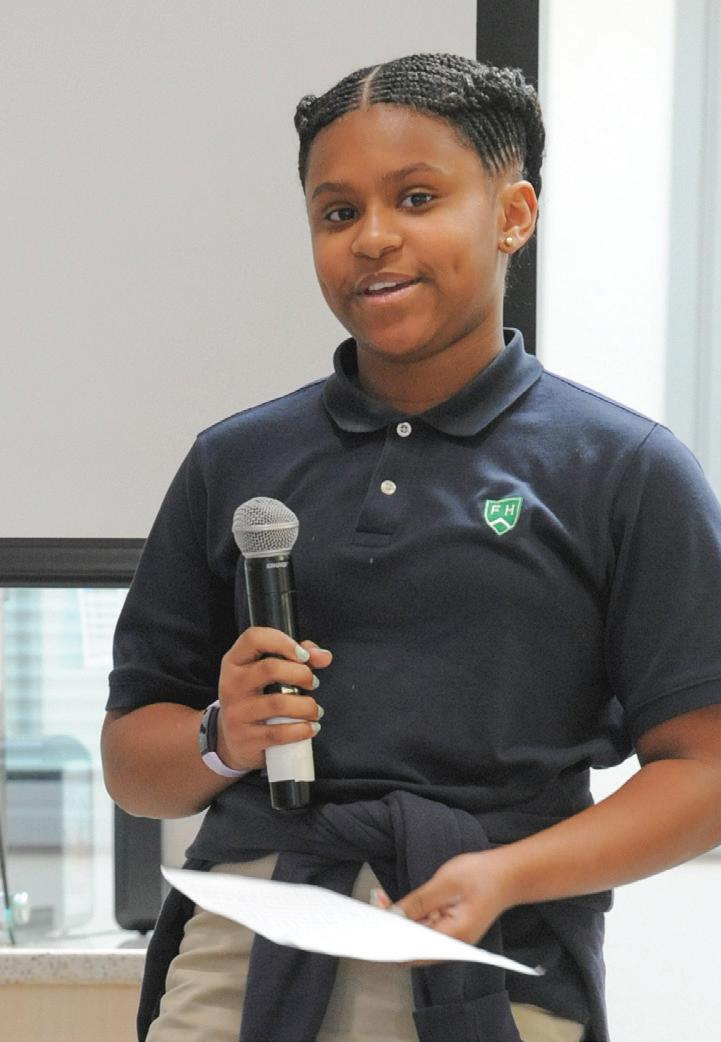
Spanish
Grade 7 students build upon their knowledge base with more advanced grammatical constructions, such as the simple past tense, mastery of common irregular verbs, the impersonal “hay,” and methods of conveying quantity. Students demonstrate their understanding of nationality, travel, pets, and daily activities through projects like the “Mi Juego de Mesa” board game. In groups, students plan, develop, and create a brand new board game that highlights their Spanish learning of the past school year.
Students continue to practice oral and written Spanish skills through daily homework and classwork.
Latin
Grade 7 students continue their Latin language study by entering the world of Salvius and his family, Roman ambassador of Great Britain, and political liaison to the emperor. Common themes of territorial expansion and the nature of an “empire” are explored in our stories. The differences between the various past tenses in both English and Latin are the linguistic focus of the course. Ancient Egypt and its cultural, religious, and geopolitical impact on the Roman Empire are explored. Linguistically, a significant amount of instructional time is dedicated to mastering noun declination. Every third-year Latin student can identify the case, number, and gender of any noun encountered during translation. This course encompasses all of Unit 2 of the Cambridge Latin Course.
In addition, Grade 7 Latin students complete the “Ancient Wonders of the World” project. They research and present a synopsis of one of the Seven Wonders of the Ancient World, all of which held cultural significance in classical times and are instrumental in understanding their values as a society.
Music
After viewing the documentary Gumboots, Grade 7 students learn how the power of music was used as a common language among South African miners of different dialects. Students learn how Gumboot dancing evolved from communication into a competitive dance performance. Students then create an original group presentation utilizing synchronized body percussion. In addition, Grade 7 musicians also continue to compose and perform music using traditional classroom instruments, Chromebooks, and keyboards in the Keyboard Lab, demonstrate proficiency in music literacy skills, including reading and writing melodic notation in the Treble and Bass clefs and reading and writing rhythmic notation including quarter, half, dotted half, eighth, sixteenth notes and their corresponding rests, and sing on pitch with proper posture, demonstrate appropriate vocal production in both the upper and lower registers in the classroom and at our formal concerts.
Visual Art
Grade 7 artists explore self-portrait painting, connecting Math and Diversity, Equity, and Inclusion with Visual Art. Students create a photorealistic self-portrait painting using a grid transfer process and painting style made famous by famed artist Chuck Close who overcame multiple physical obstacles and limitations. Students learn about sculpture as an art form and how everyday objects and materials can create a freestanding sculpture. Students create Pop Art clay food sculptures from kiln-fired clay and glazes. Using research gathered in Science about a specific constellation, students visually express this understanding through the usage of watercolors, copper wiring, and an LED bulb and battery.
Learning and Design
Grade 7 students exhibit independence as they take more ownership in selecting what helps their organization and learning. Digital Citizenship topics go more in-depth about digital footprints and thinking before posting. Coding skills move to an intermediate level as students rely on previous knowledge to work with timers and interactions between objects. Programming in JavaScript is introduced to all students, and students can choose to increase their skills in JavaScript or Python if interested.
Social-Emotional Learning
Grade 7 students explore leadership roles in the Upper School, the mission skills curriculum shifts to focus on developing creativity, resilience, and ethics. Through our advising program, students explore how navigating middle school requires creativity and resilience. Identifying areas for growth with their advisor helps students set goals for each trimester. An introduction to ethics and the development of leadership skills takes place during weekly wellness classes. These lessons and reflections allow students to assume leadership roles the following year in Grade 8.
Highlights of Grade Level Objectives
By the end of Grade 7, Far Hills Country Day School students will be able to: • create a thesis statement and support it with evidence from the text; • write a multi-paragraph essay with transition sentences; • demonstrate their understanding in a variety of ways including traditional formative and summative assessments, oral presentations, and writing assignments; and • analyze data and calculate the probability of singular and compound events.
